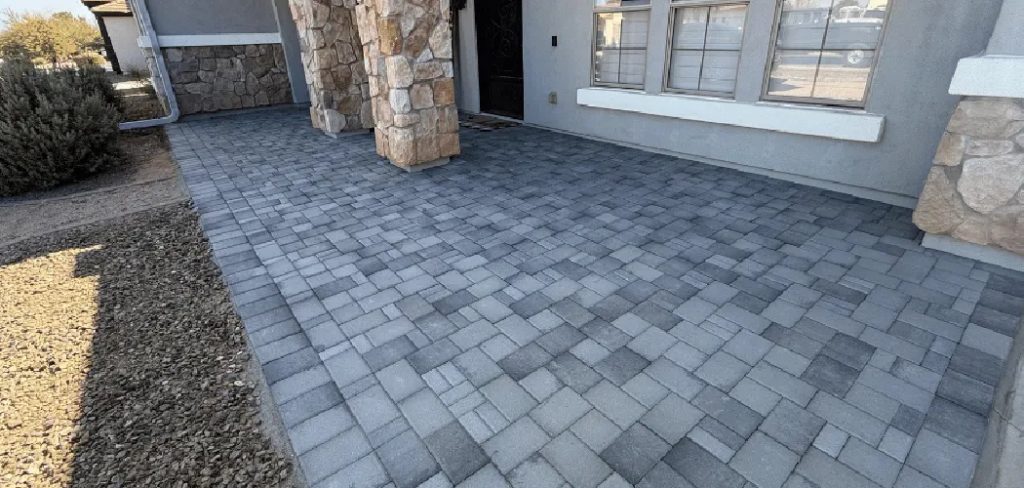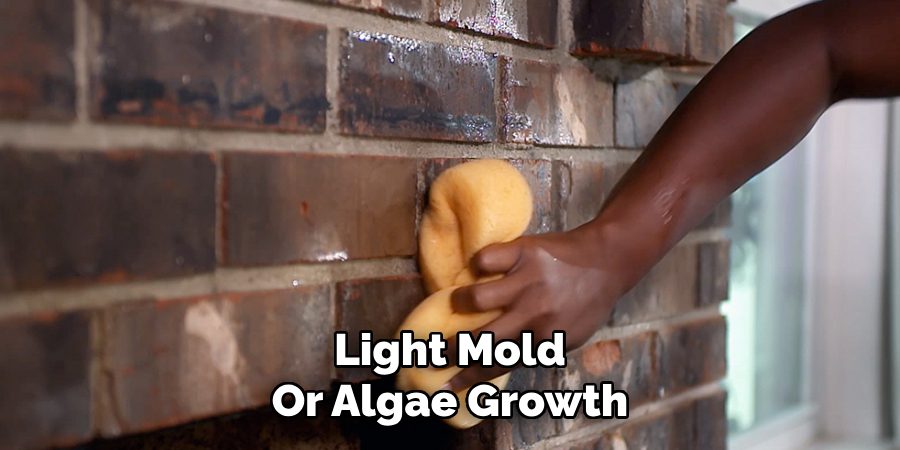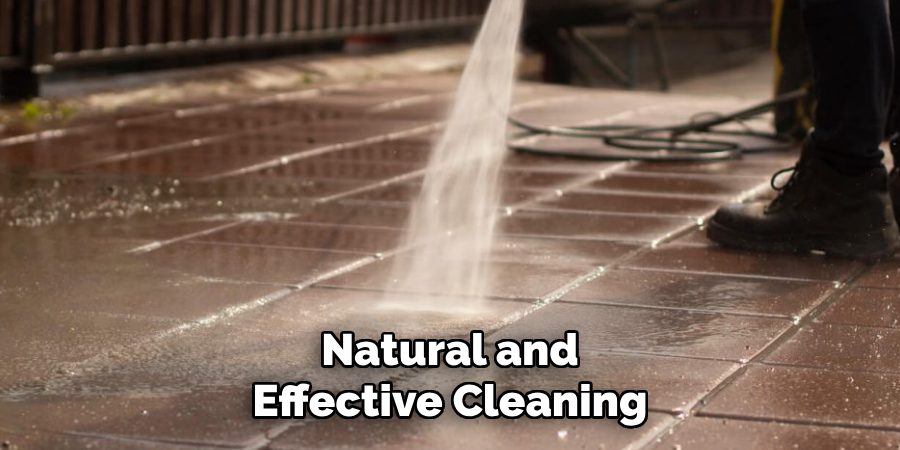Brick patios are a timeless addition to any outdoor space, offering both durability and charm. However, they can become covered in dirt, moss, mold, and stubborn stains over time. This buildup not only diminishes the aesthetic appeal of your patio but can also lead to long-term damage if not properly addressed. Regular cleaning is essential to maintain the beauty and

longevity of your brick patio, ensuring it remains a functional and inviting area for years to come. Understanding how to clean bricks on patio efficiently can save time and effort while achieving impressive results. This guide will walk you through practical methods to remove dirt and stains, prevent moss and mold growth, and even protect your patio with sealing techniques. Whether it’s through regular sweeping, scrubbing, or applying a sealant, these steps will help you restore and preserve the look of your outdoor area effectively.
Identifying Common Types of Stains on Bricks
Understanding the types of stains that commonly affect brick patios is the first step toward effective cleaning. Each stain requires a slightly different approach, making proper identification essential.
Dirt and Grime Build-Up
Over time, brick patios can accumulate dirt, leaves, and other debris, leading to a dull, dirty appearance. This is often caused by daily wear-and-tear, wind, and foot traffic. Regular sweeping and periodic scrubbing can help prevent grime from settling into the surface. Ignoring this buildup can make cleaning more difficult in the long term.
Moss, Algae, and Mold Growth
Moisture and shaded areas create the perfect environment for moss, algae, and mold to thrive on brick surfaces. These green or black patches mar the patio’s appearance and can make it slippery and unsafe. Addressing moisture issues and using mold-resistant cleaning solutions are key to minimizing this growth.
Oil, Grease, or Food Stains
Patios often serve as hubs for outdoor cooking and dining, making them susceptible to stains from oil, grease, or food spills. Oil

spots from BBQ grills dropped food, or nearby plant debris can leave unsightly marks. Proper cleaning methods, including degreasers and spot treatments, can effectively tackle these stains, restoring the patio’s clean look.
Tools and Cleaning Solutions for Bricks
Cleaning brick patios effectively requires the right tools and solutions to address different types of dirt, grime, and stains. Below are the recommended tools and cleaning solutions to maintain the cleanliness and longevity of your brick patio.
Step 1: Basic Cleaning Tools
- Broom or Leaf Blower: Use these to remove loose dirt, leaves, and debris from the surface before deep cleaning.
- Stiff-Bristled Brush: Ideal for scrubbing stubborn spots and for reaching crevices between bricks.
- Garden Hose or Pressure Washer: A garden hose can rinse off loose particles, while a pressure washer is useful for deep cleaning and tackling ingrained grime.
Step 2: Cleaning Solutions
- Mild Soap and Water: Mix a small amount of dish soap with warm water for regular maintenance cleaning of brick surfaces.
- Vinegar Solution: A 1:1 mixture of vinegar and water works well for removing mold and mildew. Apply the solution, scrub the affected area, and rinse thoroughly to prevent damage to surrounding vegetation.
- Oxygen Bleach or Dish Soap: For tough stains like grease or oil, oxygen bleach is an eco-friendly alternative that breaks down stains effectively. You can also use concentrated dish soap combined with gentle scrubbing to lift stubborn spots.

These tools and cleaning solutions ensure that your patio stays presentable and safe for use in any season. Regular maintenance with these items can significantly reduce the effort needed for more intensive cleaning tasks.
How to Clean Bricks on Patio: Basic Cleaning Process for Bricks
Keeping your brick patio clean enhances its appearance and prolongs its lifespan. Follow these simple steps for efficient maintenance:
Step 1: Sweeping or Blowing Away Debris
Begin by clearing the area of loose dirt, leaves, and dust. Use a stiff-bristled broom to sweep the patio thoroughly. For a quicker method, a leaf blower can effectively remove debris and dust from the surface, saving time and effort. Ensuring a clean surface before washing makes the cleaning process more effective and prevents the dirt from spreading further during washing.
Step 2: Applying Soap and Water Solution
Prepare a cleaning solution by mixing a small amount of mild dish soap with warm water in a bucket. Gently scrub the brick surfaces with the soapy mixture using a soft-bristled brush. Pay extra attention to any areas with noticeable stains, such as grease, dirt, or mold. The gentle scrubbing will lift these stains without damaging the brick’s texture, ensuring your patio retains its durable and rustic appeal.
Step 3: Rinsing and Drying
Once the scrubbing is complete, use a garden hose to rinse off the soap and any loosened grime thoroughly. Make sure all residue is washed away to prevent streaking or soap buildup. After rinsing, allow the patio to air dry. Choosing a sunny day for this process helps expedite drying, leaving your patio clean and ready for use. Regular cleaning following these steps ensures a pristine and welcoming outdoor space.
How to Clean Bricks on Patio: Removing Moss, Mold, and Algae from Bricks
Moss, mold, and algae can diminish the appearance of your brick surfaces and make them slippery and unsafe. Addressing these growths promptly ensures your patio remains both attractive and functional. Follow these steps for effective removal:
Step 1: Using a Vinegar or Bleach Solution
For light mold or algae growth, prepare a solution by mixing 1 part vinegar with 1 part water in a spray bottle. Apply this mixture generously to the affected areas and allow it to sit for 10–15 minutes, letting the vinegar break down the growth. Use a

chlorine bleach solution instead for more severe mold, mildew, or algae. Combine 1 part bleach with 10 parts water and apply it in the same way, ensuring you avoid applying bleach directly to plants or grass as it may harm them.
Step 2: Scrubbing Away Growth
Once the solution has had time to work, use a stiff-bristled brush to scrub the bricks. Apply firm pressure to loosen and remove the moss, mold, or algae. It’s essential to focus on crevices where these growths tend to be most stubborn while ensuring the bricks’ texture is not compromised through excessive force.
Step 3: Rinsing Thoroughly
Thoroughly rinse the treated areas using a garden hose to wash away any remaining solution and loosen debris. Be meticulous in rinsing to ensure no bleach or vinegar remains on the surface, as lingering residue can damage the bricks over time. By following these steps, your bricks will regain their clean and polished appearance, free of unsightly growth. Regular maintenance can help keep these issues from recurring.
Tackling Oil, Grease, or Tough Stains
Step 1: Using Baking Soda or Dish Soap
Begin by addressing minor grease spots with baking soda, a natural and effective cleaning agent. Sprinkle baking soda generously over the affected areas and use a damp brush to scrub the spots gently but thoroughly. The abrasive texture of

baking soda helps lift grease from the surface of your bricks. Alternatively, you can opt for dish soap—apply a few drops directly to the greasy area and scrub gently with a brush. Dish soap is excellent for breaking down oils and lifting the residue without damaging your bricks.
Step 2: Dealing with Stubborn Stains
Consider using a commercial degreaser designed explicitly for outdoor surfaces for tougher, more persistent stains. Apply the degreaser to the stained area and allow it to sit for approximately 10-15 minutes to penetrate and dissolve the oil or grease. Once the product has had enough time to work, scrub the area thoroughly with a stiff-bristled brush to ensure the stain lifts from the brick’s surface. Finish by rinsing the treated area with a garden hose to remove all residue and leave your bricks looking clean and revitalized.
Preventing Future Stains and Buildup
Step 1: Regular Sweeping and Cleaning
Maintaining your patio begins with consistent upkeep. Sweep the area regularly to remove dirt, debris, and leaves that can accumulate and lead to unsightly stains or encourage mold growth.
If spills occur, promptly address them to prevent the substances from falling into the brick. Immediate cleaning ensures that grease, oil, or other residues do not have time to seep into the porous surface of the bricks, making removal significantly easier.
Step 2: Sealing Bricks for Protection
Consider applying a high-quality brick sealant after thoroughly cleaning your patio to provide an added layer of defense against future stains and weather damage. A sealant creates a protective barrier, repelling water, oils, and other potentially staining

substances. Furthermore, sealants help prevent the growth of moss, mildew, and mold, which can deteriorate the bricks over time. When applying a sealant, ensure the surface is dry and clean for optimal adhesion. Regularly reapplying the sealant—typically every few years—will maintain its protective properties and keep your patio looking pristine for longer.
Common Mistakes to Avoid
When caring for your brick patio, it’s important to steer clear of certain common mistakes to ensure its longevity and appearance. One major mistake is using harsh chemicals or cleaners that can damage the bricks or harm surrounding plants and soil. Always opt for mild, brick-safe solutions to avoid unnecessary wear or environmental harm. Another frequent error is not rinsing thoroughly after cleaning.
Leaving behind soapy residue or cleaning agents can attract more dirt over time, defeating the purpose of cleaning altogether. Additionally, ignoring regular maintenance can lead to the buildup of stubborn stains, moss, or debris that are far more difficult to remove later. Set a consistent maintenance schedule to address minor issues before they escalate. By avoiding these missteps, your brick patio will remain attractive and durable for years to come.
Conclusion
Maintaining a clean and durable brick patio is simpler than it seems with the right approach. Regular sweeping removes debris, while occasional scrubbing tackles stubborn dirt and stains. Using appropriate cleaning solutions ensures that your patio remains safe from harsh chemical damage. Equally important is establishing a consistent maintenance routine to prevent buildup and unsightly stains. To further extend the life and beauty of your patio, periodic sealing is highly recommended. By following these guidelines on how to clean bricks on patio, you can enjoy a pristine, long-lasting outdoor space that adds charm and value to your home.

Professional Focus
Oliver Wood, a passionate patio designer, specializes in creating comfortable and inviting outdoor spaces that enhance relaxation and entertainment. His work combines a deep understanding of design with a love for nature, making him a standout professional in the field of outdoor living spaces. Through his thoughtful approach, he transforms everyday patios into extraordinary retreats for family and friends.
About the Author
Oliver Wood, a skilled patio designer, shares his expertise on outdoor living through his designs and insights. With a background in patio design and a genuine passion for creating beautiful spaces, he encourages others to invest in their outdoor environments, enhancing their homes with functional and inviting spaces for relaxation and entertainment.
Education History
University: Virginia Union University
Oliver’s education equipped him with the knowledge and skills to design patios that merge aesthetics with comfort, transforming outdoor areas into beautiful extensions of the home.
Expertise:
- Patio Design and Outdoor Living Spaces
- Functional and Aesthetic Landscaping
- Comfortable and Inviting Outdoor Environments
- Design Philosophy for Family-Oriented Spaces
- Creating Spaces for Relaxation and Entertainment
